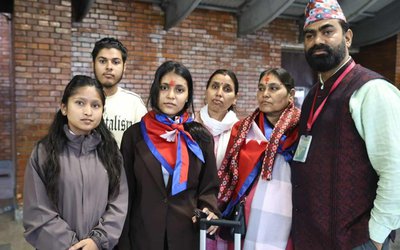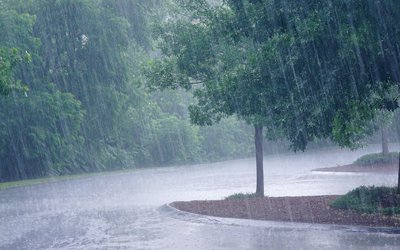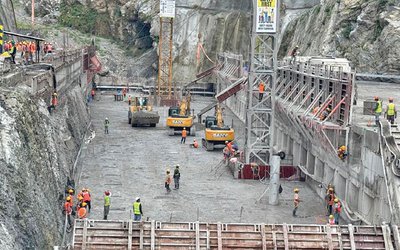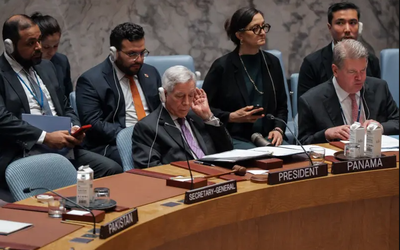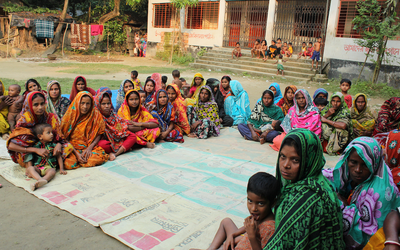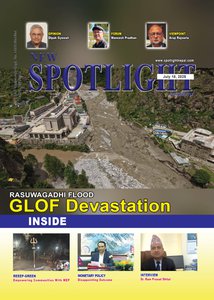Forest fires in Nepal are no longer erratic natural hazards and disasters. They have become a recurring and intensifying crisis, especially in ecologically diverse and densely forested regions such as Bagmati province. Over the last decade, Bagmati province has faced an alarming increase in the frequency, scale, and intensity of forest fires, posing a serious threat to biodiversity and human well-being. With more than 27% of its land covered in forests and hosting multiple protected areas, Bagmati Province stands at the frontline of Nepal’s forest fire risks. A spatial-temporal analysis of forest fire data from 2014 to 2024 highlights the scale of the issue. Over 46,000 fire incidents were recorded across Bagmati province, and around 34% of the forested landscape falls under very high fire risk zones, with the Siwalik region emerging as particularly vulnerable due to its dry terrain and dense vegetation. Districts such as Chitwan, Makwanpur, and Sindhuli consistently report high fire incidences, especially during the dry pre-monsoon season from January to May. These cause thousands of hectares of forest lost, disruptions to local ecosystems, and growing fears among community members.
The causes of these fires are no mystery. Environmental factors are not the only ones influencing the risk of wildfires; vegetation conditions, including species richness, tree age distribution, and human activity, are all important. The most common reason, which accounted for 75.86%, is human negligence, which includes reckless actions such as improperly disposing of burning materials like cigarettes. Agricultural practices such as slash-and-burn, the deliberate ignition of forest patches to produce charcoal, and everyday negligence, like unsupervised campfires, are also key causes. These are further intensified by climate-related factors- rising temperatures, decreased precipitation, and prolonged drought- creating ideal conditions for fires to ignite and spread rapidly. In addition, decreasing dependence on forest products and a lack of alternative livelihoods can unexpectedly increase the fire risk. This suggests a disconnect between local communities and forest management, potentially leading to decreased stewardship and increased vulnerability to fire. Forest fires have far-reaching ecological and socio-economic consequences. Ecologically, they lead to habitat destruction, biodiversity loss, and soil degradation. Fires also release massive amounts of carbon into the atmosphere, worsening air pollution and contributing to climate change. Smoke from forest fires significantly elevates PM 2.5 levels, increasing respiratory illness and shortening life expectancy in affected areas.
Forest fire management in Nepal, including Bagmati Province, is currently characterized by a combination of government-led programs and community-based efforts. Community Forest User Groups (CFUGs), a hallmark of Nepal’s participatory forest governance model, play a frontline role in managing fires. They are armed with traditional knowledge and hand tools and are engaged in activities such as constructing firelines, conducting patrols, and raising awareness about fire risks. However, their efforts are often constrained by a lack of technical training, limited access to firefighting tools, and minimal financial support. Moreover, these activities are largely voluntary and seasonal, limiting their overall effectiveness. With fewer people relying on forest products today, community involvement is shrinking. Volunteers are hard to find. People no longer feel a sense of ownership over the forests, viewing them as someone else’s responsibility.
Government agencies, particularly the Division Forest Offices (DFO), are tasked with oversight and policy implementation. While forest officers acknowledge the growing threat of fires, they point to systemic challenges such as poor inter-agency coordination, inadequate resource allocation, and the absence of real-time monitoring systems. Alarmingly, most local units lack warning systems or structured response protocols, making it difficult to mobilize resources quickly once a fire breaks out. Forest officers also report difficulties in maintaining up-to-date data on fire incidents, further complicating policy planning and evaluation. The dependence on outdated communication channels, including phone calls, suggests a lack of progress in implementing technological innovations. Early detection is hampered by this poor infrastructure, which also slows the mobilization of resources and the start of firefighting operations. Even in areas with higher fire risks, there is limited access to real-time weather data or forecasting tools that could help communities prepare better.
The fundamental challenge in effectively implementing forest fire management strategies lies in poor policy integration across different governance levels. Despite Nepal’s Forest Act 2076 providing a legal basis for forest protection, prescribing penalties for forest fire offenses, including three years of imprisonment, fines up to NRS 60,000, and compensation for damages, the effectiveness of these policies is contingent on resource availability, which highlights the gap between policy formulation and implementation due to financial and logistical constrain. Similarly, community people often hesitate to report offenders from their villages. There is also disconnect between policy and reality. While national and provincial plans talk about fire control, they are often not backed by the budget, training, or infrastructure needed to implement them. And where different government bodies fail to coordinate effectively, even the best plans fall apart. The governance of fire management is further complicated by overlapping institutional mandates and the disconnect between national policies and local implementation. While the National Adaptation Plan (NAP) 2021-2050 recognizes forest fires as a climate-related hazard and calls for integrated response systems, this policy focus has yet to translate effectively at the provincial or municipal levels. For instance, many Local Adaptation Plans of Action (LAPA) do not include forest fires in their climate vulnerability assessments, missing a critical component of local risk profiles.
As forest fire incidences have been increasing, becoming more intensive and frequent due to escalating factors of human negligence and climate change, it is time to rethink about how we better manage forest fires by addressing the challenges noted above. First and foremost, our mindset needs to be changed from 'forest fires as occasional hazards and disasters' to 'forest fires as chronic risks and disasters' due to increased human negligence and changing anthropocene climate. Fire management practice needs to achieve next level of innovations. Multi-faceted and integrated [integration of line ministries, departments, and diverse threats including climate change which may cause fire and amplify] fire management system is inevitable now and this must not only be coordination but a comprehensive partnership and integration—a paradigm shift in thinking from partnership of multiple institutions in anticipating fires to combating fires and developing a system that reduces forest fire incidents and fire induced damages. Accessible infrastructure planning is also a critical component of integrated fire management since strategic design of forest roads could significantly enhance access and fire response capabilities. Another important aspect can be introduction of fire insurance mechanism for natural resources and individuals involved in fire-fighting and control. Revitalized roles for CFUGs and bottom-up approaches along with integration of community, science and traditional knowledge can also play crucial role to manage dry leaves, litter, and control of forest fires. There is also an urgent need for policy reforms at all levels of governments, as appropriate, for allocating sufficient budget, prioritizing fire detection early warning system, stricter penalties for negligence and intentional fire setting practices for forest fire prevention and control, aligning with broader climate change mitigation and adaptation strategies.
Dr. Chandra Lal Pandey is an Associate Professor in the Department of Development Studies, Kathmandu University.
Kalpana Bhattarai is a recent graduate of Master in Human & Natural Resources Studies.






